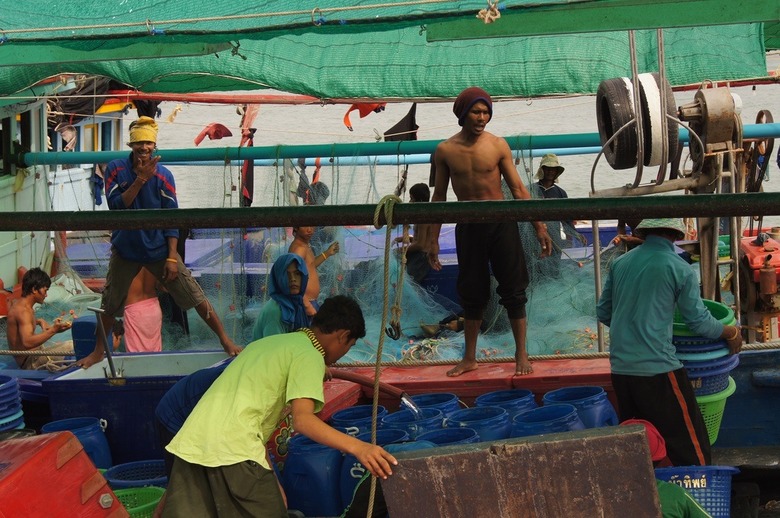Slaves In Thailand's Seafood Industry Endure Horrific Conditions To Create Food For American Pets, Livestock
A detailed investigation published this week by The New York Times takes a look at Thailand's gruesome seafood industry, which relies heavily on slave labor, and of which the United States is a primary consumer. Earlier this year, hundreds of Burmese fishermen were rescued from captivity on a small island village, where they were forced to work up to 22 hours a day to catch fish that would be sent to Thailand each day.
Despite growing pressure to institute reforms, the industry has become so vast, and maritime labor laws so opaque, that it is extremely difficult to police. For now, Thailand's slave fishermen are responsible for providing the seafood for several of America's top pet food brands, including Iams, Meow Mix, and Fancy Feast. Much of the rest is used to feed livestock.
From The New York Times:
"The United States is the biggest customer of Thai fish, and pet food is among the fastest growing exports from Thailand, more than doubling since 2009 and last year totaling more than $190 million. The average pet cat in the United States eats 30 pounds of fish per year, about double that of a typical American.
"Though there is growing pressure from Americans and other Western consumers for more accountability in seafood companies' supply chains to ensure against illegal fishing and contaminated or counterfeit fish, virtually no attention has focused on the labor that supplies the seafood that people eat, much less the fish that is fed to animals."
Read the full investigation, including an exploration of the rampant deaths of migrant fishermen by pirates, on The New York Times.
